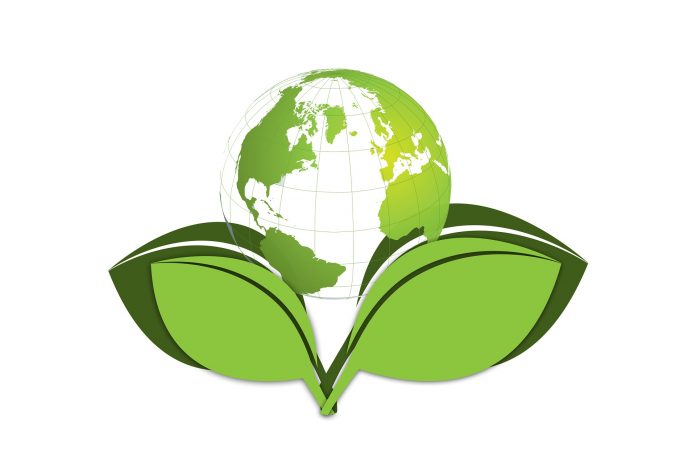The author of this article is Ishika Garg, a student of University School of Law and Legal Studies, GGSIPU. This article analyses the draft Environmental Impact Assessment Notification 2020 and also highlights the concerns related to it.
Table of Contents
Introduction
The National Environmental Policy Act (NEPA), 1969 implemented by the USA defines Environmental Impact Assessment (EIA) as “a systematic, interdisciplinary approach which will insure the integrated use of the natural and social sciences and the environmental design arts in planning and in decisionmaking which may have an impact on man’s environment”. EIA is a process that evaluates the effects that are likely to be caused by a proposed development project on the environment. It assesses the favorable and unfavorable aspects of a project, compares them with different alternatives and presents the one that is the most viable option i.e. safe for the environment and economically cost efficient. It includes social, economic and human health impacts to evaluate the proposed project. EIA is a tool of significant importance since it not only helps in conservation of the environment but also in economization of resources.
History
Evolution of EIA Worldwide
The evolution of EIA dates back to 1969 when the USA implemented the National Environmental Policy Act (NEPA), 1969 which made it necessary for any sizable project to get EIA considerations. After implementation by the USA, several countries introduced EIA. The year 1973-1974 witnessed the implementation of EIA by Canada, Australia and New Zealand. EIA was further implemented by Thailand, France, Philippines, Netherlands, Japan etc. and by the mid 1980s EIA became an indispensable part of the World Bank and also started spreading to the Asian countries. It was in 1992, at the United Nations Earth Summit held in Rio de Janeiro when EIA was accepted as a national tool for looking into the impacts of proposed projects.
Evolution of EIA in India
The Evolution of EIA in India started in 1976-77 when the Department of Science and Technology was demanded by the Planning Commission to evaluate the impact of the river-valley project on the environment. Eventually, the projects that required the approval of the Public Investment Board also came within the purview of the Department of Science and Technology and Agriculture. All environmental matters in India were within the ambit of the Department of Science and Technology and Agriculture till the 1980s. It was in the 1980s that the Department of Environment came into effect and it elevated to a proficient ministry in 1985. It was by the early 1990s that environmental authorisation was required for sizable projects. Guidelines requiring EIA process were implemented by the Ministry of Environment and Forests (MoEF) for the river-valley project. It was finally on 27 January 1994 when MoEF made environmental clearance compulsory for starting new projects or improvement of existing projects enforced by Schedule 1 of EIA Notification 1994.
Environmental Impact Assessment Notification 2020
The Ministry of Environment, Forest and Climate Change (MoEFCC) released Draft EIA Notification 2020 to replace EIA Notification of 2006.
Draft EIA Notification 2020
|
Released by |
The Ministry of Environment, Forest and Climate Change (MoEFCC) |
|
Released on |
12th March, 2020 |
|
Issued on |
23rd March, 2020 |
|
Published in official gazette |
11th April, 2020 |
|
Extended deadline 1 for raising objections |
30th June, 2020 |
|
Extended deadline 2 for raising objections |
11th August, 2020 |
How is draft EIA Notification 2020 different from EIA Notification 2006?
There are several amendments that have been made to the current EIA Notification 2006. Some of them are-
Definitions
The draft EIA Notification 2020 has elucidate definitions. Paragraph 3 of EIA Notification, 2020 consists of 60 definitions while no definitions are present in EIA Notification 2006.
Categorisation of project
In both the Notifications, the projects are defined as Category A, Category B1 and Category B2. However, the EIA Notification 2006 does not clearly classify B1 and B2 categories. The screening process of EIA Notification 2006 is stated in paragraph 7(i)(I.). It states, “ For categorization of projects into B1 or B2 except item 8 (b), the Ministry of Environment and Forests shall issue appropriate guidelines from time to time.” Draft EIA Notification 2020 clearly categorises B1 and B2 projects and thus, does not require the screening process. According to EIA Notification 2020,
-
- Category A projects require prior- EC from the ministry and include the expansion and modernisation of existing projects.
- Category B1 projects require prior-EC from the State Level Environment Impact Assessment Authority (SEIAA) or Union Territory Level Environment Impact Assessment Authority (UTEIAA) and include the expansion and modernisation of existing projects. Category B1 excludes those projects that fulfill the General Conditions. General Condition means that if any project is located within the boundary of an extremely polluted area or an eco- sensitive zone or near the boundary of protected area, union territory etc. then the evaluation will be done by the Centre.
- Category B2 projects– Category B2 projects are of 2 types-
- Projects required to be placed before the Appraisal Committee- Require prior-EC from the SEIAA or UTEIAA.
- Projects that do not require to be placed before Appraisal Committee- Require prior-EP from the SEIAA or UTEIAA
Prior Environmental Permission
The draft EIA Notification 2020 includes two types of approvals i.e. prior environmental clearance (prior-EC) and prior environmental permission (prior-EP) while the 2006 Notification only included the former. Paragraph 3, clause 40 of EIA Notification 2020 defines prior-EC as approval of the Regulatory Authority for Category A, Category B1 and Category B2 projects that have to be placed before the Appraisal Committee. The Appraisal Committee recommends the Regulatory Authority. Paragraph 3, clause 41 of EIA Notification 2020 defines prior-EP as approval of the Regulatory Authority for Category B2 projects that do not have to be placed before the Appraisal Committee.
Technical Expert Committee
There is a Technical Expert Committee in Draft EIA Notification, 2020 which is not present in EIA Notification 2006. Paragraph 9 of Draft EIA Notification, 2020 states that a Technical Expert Committee should be formed for categorisation and re-categorisation of projects on the basis of scientific principles. The Committee is also conferred the power to visit any site related to a project for evaluating the environmental impact. However, the Committee is required to send a 7-day prior notice to the project proponent (individual or private entity managing the affairs of the project) by the ministry.
Projects exempted from prior-EC or prior-EP
Paragraph 26 of Draft EIA Notification 2020 lists 40 projects that are exempted from acquiring prior-EC or prior-EP. This includes various projects such as dredging, digging of wells, Solar Photo Voltaic (PV) Power projects etc. In EIA Notification 2006, there was no such exemption list.
Public Hearing and Consultation
A few changes have been made with respect to the notice of public hearing and public consultation. They are –
-
- In clause 3 sub-clause 3.1 of Appendix-I of Draft EIA Notification 2020, it is stated that 10 days are to be given to the Member-Secretary of State Pollution Control Board (SPCB) or Union Territory Pollution Control Committee (UTPCC), from the date of receipt of application. This period has been given to the Member-Secretary to finalise the date, time, and venue for conducting public hearing after getting the consent of the officer in charge of public hearing. In EIA Notification 2006 7 days were given to the Member- Secretary for the same.
- In clause 3 sub-clause 3.1 of Appendix-I of Draft EIA Notification 2020, it is also stated that at least 20 days’ notice period should be given to the public for providing their responses. In EIA Notification 2006 30 days were given for furnishing responses from the public.
- In paragraph 14 clause 6 of Draft EIA Notification 2020, it is stated that public hearing shall be conducted by SPCB or UTPCC within 40 days of receipt of request letter from project proponent. In EIA Notification 2006, this time period was 45 days and the public hearing was to be conducted at the site or in close proximity to the site. No such clause is given in Draft EIA Notification 2020.
- In paragraph 14 clause 2 of Draft EIA Notification 2020, it is stated that public consultation will be undertaken for projects of Category A and Category B1 that have to undergo expansion or modernisation with capacity increase of more than 50%. In EIA Notification 2006, public consultation was not subject to any minimum capacity increase and was undertaken for all Category A and Category B1 Projects
- Paragraph 14 clause 2 of Draft EIA Notification 2020, contains the list of projects that are exempted from public consultation. The Draft EIA Notification 2020 has added a few more projects to the list of those projects that were present in Draft EIA Notification 2006. These include:
- Off-shore projects which are located farther than 12 nautical miles.
- Highways, Expressways, Multi-modal corridors or Ring Roads projects that are located near the border.
- Projects related to Oil & gas transportation pipeline that is passing through wildlife sanctuaries, national parks, coral reefs or Ecologically Sensitive Areas that are located near the border.
Validity of Prior- EC or Prior-EP
Draft EIA Notification 2020 has divided the validity into 3 phases and has increased the duration of validity of environmental clearance. EIA Notification 2006 did not have the validity of environmental clearance divided into phases. According to paragraph 19 clause 1 of Draft EIA Notification 2020, the three phases are construction or installation phase, operational phase and dismantling phase. Changes made in duration of validity of environmental clearance are-
-
- Validity for mining projects has been increased from 30 years to 50 years.
- Validity for river valley projects has been increased from 10 years to 15 years.
- Validity for Irrigation projects and Nuclear Power Projects has been increased from 5 years to 15 years. Irrigation projects and Nuclear Power Projects were a part of other projects in EIA Notification 2006 which had a validity of 5 years.
- Validity of other projects has increased from 5 years to 10 years.
Compliance report by project proponent
Changes have been made with respect to the compliance report by the project proponent. The changes are –
-
- Paragraph 20 clause 4 of Draft EIA Notification 2020 states that an yearly compliance report shall be submitted by the project proponent online to the Regulatory Authority on June 30. EIA Notification 2006 stated that a half yearly compliance shall be submitted by the project proponent in the form of hard and soft copies to the Regulatory Authority on June 1 and December 1.
- Paragraph 20 clause 5 of Draft EIA Notification 2020 also states that if the project proponent fails to submit the compliance report, then he shall have to pay a late fee for the same and non-submission of compliance report consecutively for 3 years will lead to revocation of prior-EC or prior-EP. In Draft EIA Notification 2006, no such clause was present. Late fee specified for various category projects are-
- ₹500 per day for Category B2 projects.
- ₹1000 per day for Category B1 projects.
- ₹2,500 per day for Category ‘A’ projects
Change in project site location
Paragraph 18 clause 4 of the Draft EIA Notification 2020 states that if a project has gone through public consultation or has been granted prior- EC and then there is a change in the location of the project site after it, then the project with the new location will be regarded as a new proposal and be evaluated as ‘de-novo’. However, the regulatory authority can issue an amendment in prior-EC if the Appraisal Committee believes that the shift is very small and will have no change in the EIA report.
Violation Cases
Violation of environmental clearance means clearance not being sought before starting a project. EIA Notification 2006 does not state anything regarding violation of environmental clearance. However, paragraph 21 of draft EIA Notification 2020 states that in cases of violation, the Appraisal Committee will evaluate whether the project being carried out at a site where it is permissible for construction or expansion according to the prevailing laws. The action taken will depend upon the findings of the Appraisal Committee. In case of:
Positive findings
- The project will be prescribed with standard Terms of Reference along with specific Terms of Reference for damage evaluation and other issues. Terms of reference has been defined in paragraph 3 clause 56 of the notification as a detailed scope which is prescribed by the Regulatory Authority for preparing an EIA report for the project.
- An EIA Report is to be prepared which shall include the damage assessment and remediation plan according to the criteria issued by Central Pollution Control Board (CPCB).
- Public consultation has to be sought for the project and then it has to be appraised by EAC/SEAC/UTEAC, depending upon the category of the project.
- A bank guarantee which is equal to the amount of remediation plan has to be submitted by the project proponent before the grant of environment clearance. The bank guarantee will be released after implementation of the remediation plan.
- In case of rejection of environmental clearance, the project will be treated in the same way projects of ‘negative findings’ are treated.
- The State government or SPCB will also initiate action under Section 19 of The Environment Protection Act, 1986.
Negative findings
- Shutting down of the project will be recommended along with other actions under law including directions for remediation.
- The State Government or UT administration or SPCB or UTPCC will initiate action under Environment (Protection) Act, 1986.
Moreover, the violators will have to pay a late fee depending upon the method of cognizance of violation. The per day late fee varies in suo moto application of the project proponent, reporting by any Government Authority, or found during the appraisal by Appraisal Committee or found during the processing of application, if any, by the Regulatory Authority.
Concerns regarding Draft EIA Notification 2020
The draft EIA notification 2020 has destruction written all over it. It is appalling that a tool that was initially formed to protect the environment is now being used to destroy it. The Draft EIA notification 2020 is an instrument for the industrialists to get their way. It seeks growth of commercial projects at the cost of the environment. The concerns regarding EIA Notification 2020 are-
Weakened Public Consultation
- The draft EIA Notification 2020 has weakened the public consultation process. While Category B2 projects do not require public consultation at all, no project of Category A and Category B2 which proposes expansion or modernisation of less than 50% will require public consultation at all. Consequently, the voices of the local people who are being affected by these proposals are being suppressed.
- Public consultation is also exempted in a wide range of areas like modernisation of irrigation projects, construction of buildings, standalone flyovers, bridges, elevated roads, national defence and security projects etc. This provides people a very limited scope to actually be a part of the EIA process.
- Moreover, the period of public hearing has been reduced from 45 to 40 days and that of obtaining objections from the public from 30 to 20 days. This poses a grave problem in areas where access to information is difficult and where people are unaware about the EIA process. This makes the public consultation process just a formality, since if adequate time is not given to the public for raising objections, then it is just a futile exercise.
- Principle 10 of the Rio Declaration, 1992 states that “At the national level, each individual shall have appropriate access to information concerning the environment that is held by public authorities, including information on hazardous materials and activities in their communities, and the opportunity to participate in decision-making processes.” The draft EIA Notification 2020 clearly goes against the Rio Declaration, 1992.
- In Him Parivesh Environment Protection Society vs State of Himachal Pradesh, it was held that “There is no use of having a public hearing if the public is not aware of the effects of the project both positive and negative. A public hearing without first informing the public is a total sham”.
Projects exempted from prior-EC or prior-EP
40 projects have been exempted from requiring prior- EC or prior- EP. This even includes development of solar parks, solar thermal power plants, manufacturing units for explosives, fuses etc. under the ministry of defence, activities declared by the state government as non- mining activities etc. It is quite evident that a large number of projects have been given a complete freeway and this just incapacitates the EIA process.
Yearly submission of compliance reports
The project proponent is required to submit the report only once every year. These reports have to be shown to ensure that the project is being carried out according to the terms on which permission was granted. Instead of increasing the submission of compliance reports, it has been reduced. 2 compliance reports in a year were already not enough but one report a year is just horrendous. This could lead to an enormous amount of irreversible damage on the environment due to the extended reporting time.
Increased validity of environmental clearance
The increased validity of environmental clearance of the mining, river valley and other projects can cause irretrievable damage to the environment. The validity of environmental clearance should not be so long.
Post- Facto Approvals
Diluting the EIA Process is not where the wickedness ceases. It is as clear as day that the draft notification seeks brutal annihilation of the environment for the sake of commercial advancement. Allowing clearances for projects that have started without seeking environmental clearance is an inconceivable thought. But the notification just allows the violators to continue with their projects after paying a compensation as if that could reverse the environmental damage done. This not only goes against the precautionary principle of the environment but is also an environmental crime. In Alembic Pharmaceuticals Ltd. vs Rohit Prajapati, it was held by the Supreme Court that “the grant of an ex post facto environmental clearance would be detrimental to the environment and could lead to irreparable degradation of the environment. The concept of an ex post facto or a retrospective EC is completely alien to environmental jurisprudence including EIA 1994 and EIA 2006”.
Suggestions & Conclusion
The analysis of the draft EIA Notification 2020 makes it evident that the draft seeks the growth of commercial projects at the cost of the environment. The draft not only limits the scope of public consultation to a very large extent, but also allows for post-facto approvals. Complying with this draft would mean being an accomplice to the destruction of the environment. The need of the hour is to make the EIA process more transparent and efficient. This can be achieved by improving the draft in the following ways:
- Public consultation should be sought for all projects whether small or big. Local communities are an important part of the EIA process and their interests must not be overlooked.
- Post-facto approvals should be denied. Any person carrying out any project without environmental clearance should be fined as well as imprisoned.
- Validity for prior-EC or prior-EP should be reduced to a maximum of 15-20 years to keep a check on irreversible damage being done to the environment.
- Prior-EC or prior-EP shall be made mandatory for all projects.
- Compliance reports shall be submitted by the project proponent at least 4 times a year. This will ensure that the project is being carried out according to the terms on which permission was granted and will also keep a tight rein on environmental damage by project proponent.
References
- http://www.environmentwb.gov.in/pdf/EIA%20Notification,%202006.pdf
- http://environmentclearance.nic.in/writereaddata/Draft_EIA_2020.pdf
- https://shodhganga.inflibnet.ac.in/bitstream/10603/28047/11/11_chapter5.pdf
- https://www.env.go.jp/earth/coop/coop/document/10-eiae/10-eiae-2.pdf
- https://www.cseindia.org/understanding-eia-383
- https://www.drishtiias.com/to-the-points/paper3/environmental-impact-assessment-1
- http://www.kspcb.gov.in/Acts-Rules/EIA-Notification-1994.pdf
- https://www.indiacode.nic.in/bitstream/123456789/4316/1/ep_act_1986.pdf
- https://www.gktoday.in/gk/environment-impact-assessment/
- https://www.biologydiscussion.com/environment/environmental-impact-assessment-eia-definition-process-and-importance/16777
- https://www.energy.gov/sites/prod/files/nepapub/nepa_documents/RedDont/Req-NEPA.pdf
- https://www.indiacode.nic.in/bitstream/123456789/4316/1/ep_act_1986.pdf
- https://prsindia.org/files/covid19/notifications/4901.IND_Extension_of_deadline_May7.pdf
- https://www.livelaw.in/top-stories/delhi-hc-extends-time-for-filing-objections-to-draft-eia-notification-2020-till-august-11-159131
- https://www.un.org/en/development/desa/population/migration/generalassembly/docs/globalcompact/A_CONF.151_26_Vol.I_Declaration.pdf
- https://www.casemine.com/judgement/in/5ac5e49b4a93261aa7940864
- https://main.sci.gov.in/supremecourt/2016/2562/2562_2016_0_1501_21582_Judgement_01-Apr-2020.pdf
- https://www.livelaw.in/columns/draft-eia-notification-2020-areas-of-concern-159135
- https://www.livelaw.in/columns/draft-eia-notification-2020-areas-of-concern-159135?infinitescroll=1
- https://www.drishtiias.com/daily-updates/daily-news-editorials/draft-eia-notification-2020
- https://citizenmatters.in/an-open-letter-from-students-to-environment-minister-prakash-javadekar-19212
- https://science.thewire.in/environment/eia-2020-environmental-degradation-draft/
- https://www.newsclick.in/EIA-Notification-2020-Lockdown-India-BJP-Government
- https://india.mongabay.com/2020/03/indias-proposed-overhaul-of-environment-clearance-rules-could-dilute-existing-regulations/
- http://greenaccess.law.osaka-u.ac.jp/wp-content/uploads/2015/03/3-2-07_dutta_ppt.pdf
LawSikho has created a telegram group for exchanging legal knowledge, referrals and various opportunities. You can click on this link and join:
 Serato DJ Crack 2025Serato DJ PRO Crack
Serato DJ Crack 2025Serato DJ PRO Crack











 Allow notifications
Allow notifications



